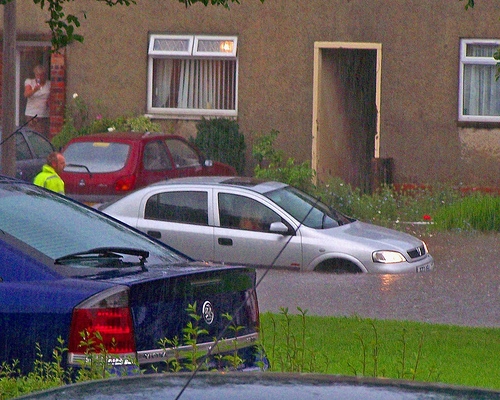Flood-damaged vehicles are required by law to have branded titles and have their status disclosed to potential buyers. Unfortunately, this isn't always the case. Don't rely on a dealer or broker to disclose flood damage to you; learn the warning signs to check for yourself.

Inspect the area near the gas and brake pedal. Look for rust on the metal arm of each pedal. Pull back the carpet flap located underneath the pedals and look for signs of mildew or mold. Note any strange odors underneath the carpet.

Look over the front and back seats. Look for signs of water damage, such as water line marks on the sides of the seating and seat belts. Discoloration will usually be present on water-damaged areas..

Open the trunk and remove the spare tire. Standing water in the trunk well beneath the spare tire is a tell-tale sign that a vehicle has been flood-damaged or has a leak. Check the trunk carpet for discoloration, mildew and stains.

Open the hood and check the engine bay for rust. Use a flashlight to better view the areas underneath major components. Several new parts surrounded by rusty parts can be a sign of a flood-damaged vehicle.

Take the vehicle to a mechanic and have it placed on a lift. Inspect the undercarriage the the vehicle for rust and corrosion. There is no reason the undercarriage should have much rust unless the vehicle was primarily operated in areas with heavy snowfall. Salt is often used to coat the roads during snow, and can cause minor surface rust.
